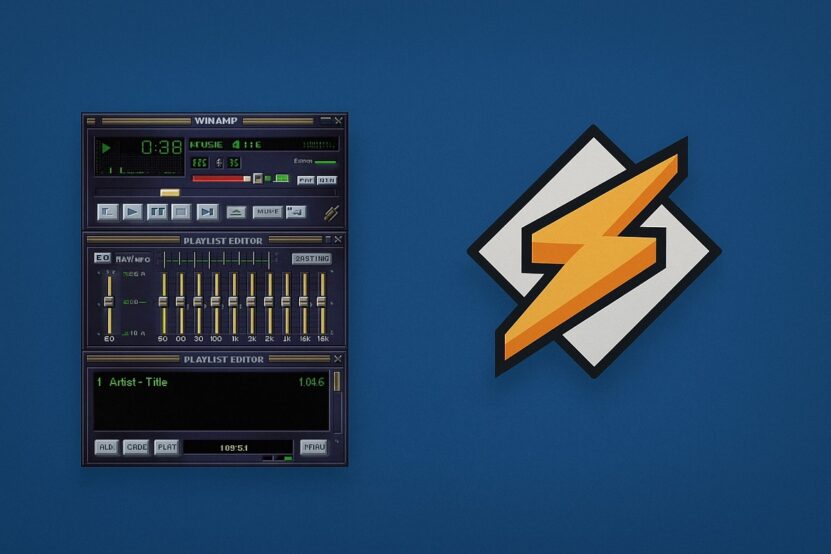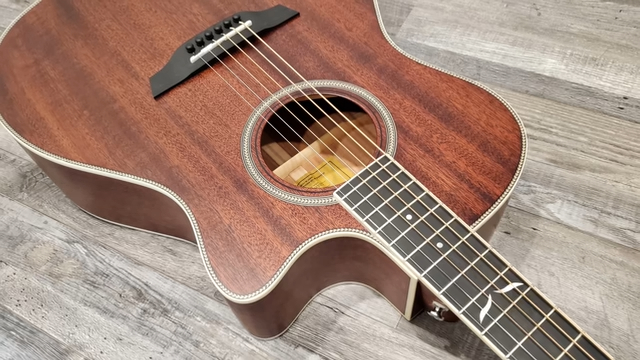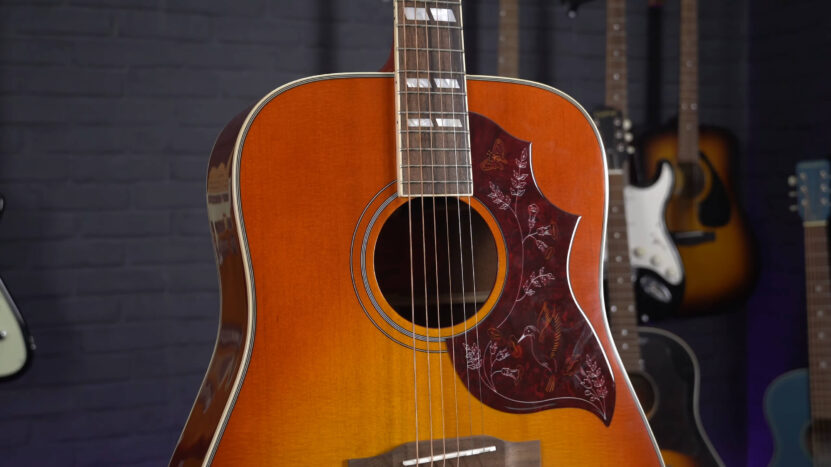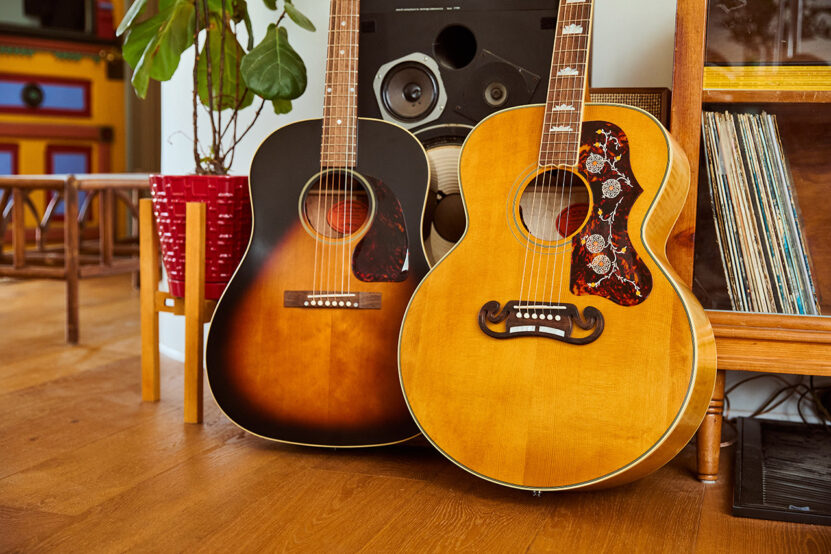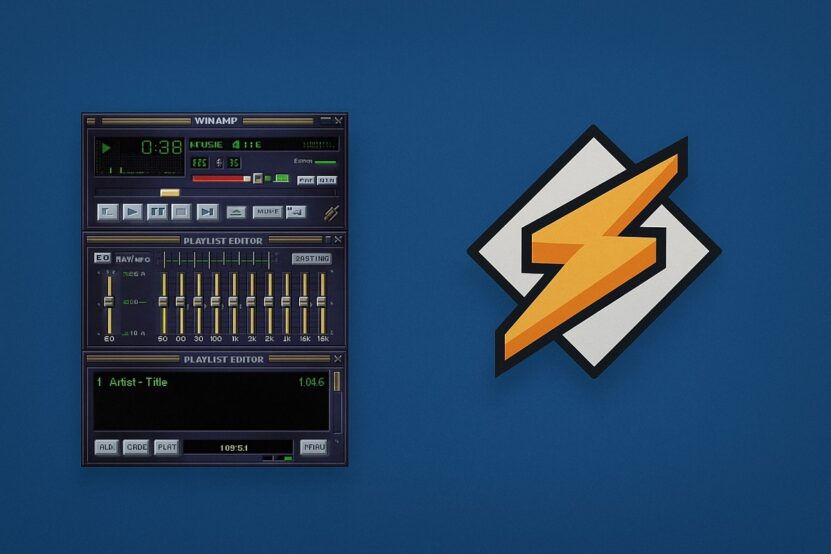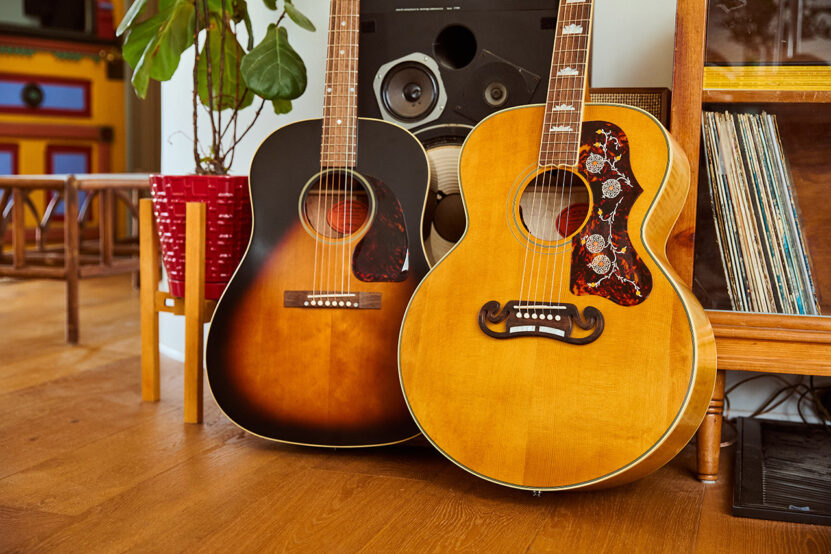
Share Post:
When you’re looking for an acoustic guitar, size and shape play a huge role in how it feels and sounds.
Each category has its own unique vibe, and it’s not just about looks. Different shapes work better for different styles, so picking the right one can make a big difference in your playing experience.
I’ll walk you through some of the most common guitar shapes and sizes, breaking down what makes each one special.
Most Popular Types of Guitars
1. Parlor Guitars
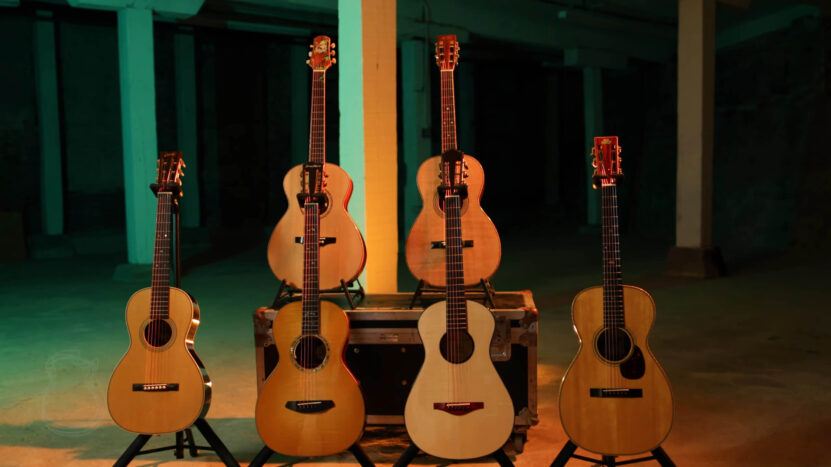
Parlor guitars are the smallest type of acoustic guitar, often favored for their portability and vintage charm. They have a narrow body with a midrange-heavy tone, making them perfect for fingerpicking and folk music.
Their compact size makes them easy to carry, and they are often chosen by musicians on the move.
Key Characteristics
- Body Size: Small, typically under 13 inches at the lower bout.
- Tone: Emphasizes midrange, less bass compared to larger guitars.
- Playability: Easy to handle for smaller players or those looking for a lightweight instrument.
Popular Models
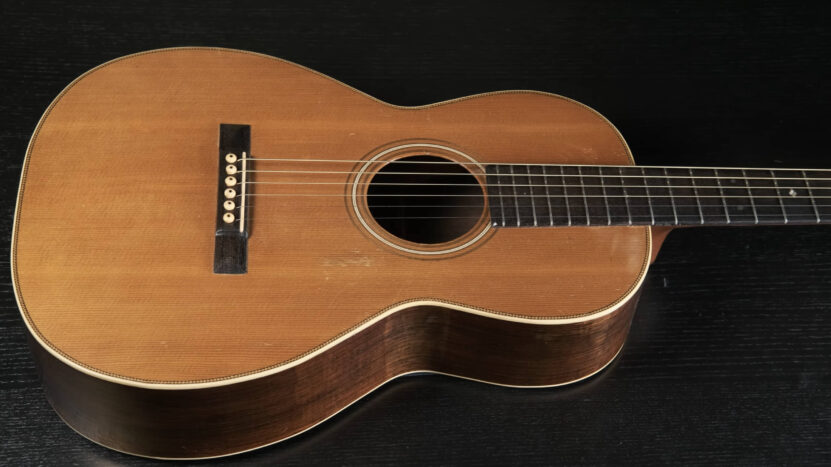
- Martin 0-28 Parlor Guitar: A classic choice, known for its balance and clarity. Price: Around $3,000.
- Ibanez PN12E: Affordable and reliable for beginners or intermediate players. Price: Around $250.
- PRS SE P20E: Offers a beautiful vintage aesthetic and great tonal quality. Price: Around $550.
Best Uses
Parlor guitars are best suited for folk, blues, and fingerstyle playing. Due to their smaller size, they may not project as much volume as larger guitars, but they shine in more intimate settings like small venues or recording environments.
2. Concert Guitars
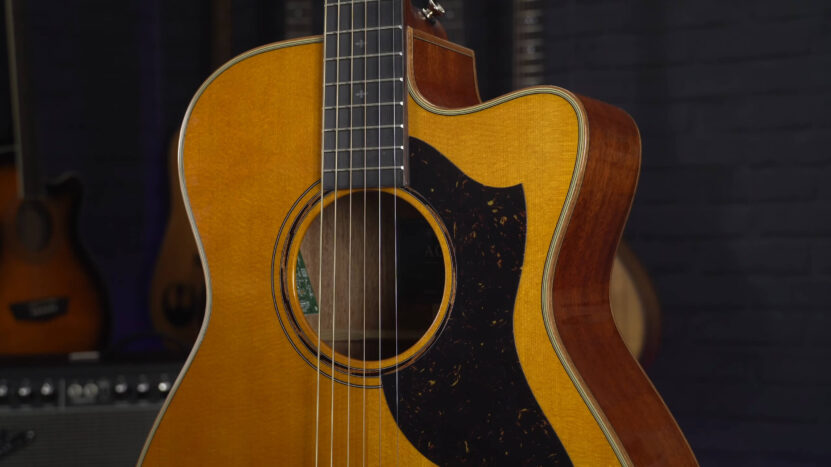
Concert guitars are a step up from parlor guitars in terms of size and volume. Their balanced tone and versatility make them a popular choice for both fingerpicking and light strumming.
The body size is still relatively small, making them comfortable for most players while delivering a fuller sound compared to parlor models.
Key Characteristics
- Body Size: Slightly larger than parlor, typically around 13.5 to 14 inches at the lower bout.
- Tone: Balanced with an emphasis on the midrange, offering a clear and articulate sound.
- Playability: Comfortable for both seated and standing players, making it a versatile option for a range of musical styles.
Popular Models
- Fender CC-60S Concert: A budget-friendly choice, offering solid tonewoods and a comfortable size for beginners. Price: Around $200.
- Yamaha AC5R ARE Concert: A high-end model with rich, full sound and premium materials like solid rosewood. Price: Around $1,200.
- Taylor 312ce: Known for its bright sound and high playability, this model is perfect for players looking for a quality instrument with a cutaway design. Price: Around $2,000.
Best Uses
Concert guitars are great for fingerpicking and light strumming, particularly in folk, pop, and classical styles.
Their size makes them ideal for live performances or recording in more controlled settings, where projection isn’t the primary focus but clarity and tone matter.
3. Grand Concert Guitars
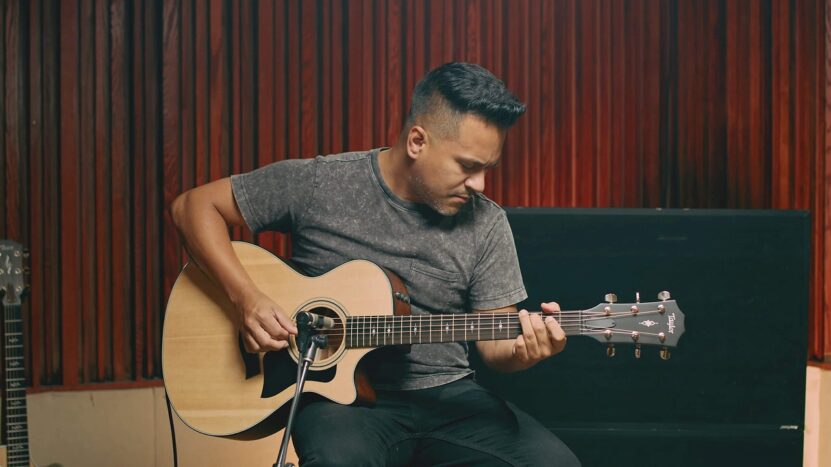
Grand concert guitars are slightly larger than concert models, offering more projection and bass response while maintaining a balanced tone.
They are a popular choice for fingerstyle players and those who enjoy a slightly fuller sound without the bulk of larger guitars like dreadnoughts or jumbos.
Key Characteristics
- Body Size: Larger than concert models, typically around 15 inches at the lower bout.
- Tone: Enhanced bass and volume while retaining midrange clarity, making it suitable for both strumming and fingerpicking.
- Playability: A comfortable body size that fits well for players looking for a bit more projection without compromising on comfort.
Popular Models
- Taylor 312ce Grand Concert: Known for its warm, balanced tone and easy playability, this model is favored by fingerstyle players. Price: Around $2,100.
- Martin 00-28 Grand Concert: Offers a rich, full sound with excellent projection. It’s a go-to for professional musicians looking for a versatile instrument. Price: Around $3,500.
- Ibanez AEG50 Grand Concert: A budget-friendly option with decent sound quality, ideal for beginners or intermediate players. Price: Around $300.
Best Uses
Grand concert guitars are versatile and can handle various styles of playing, from fingerpicking to light strumming. They’re perfect for folk, pop, and light rock, offering enough volume for solo performances without overwhelming other instruments in a band setting.
4. Auditorium Guitars
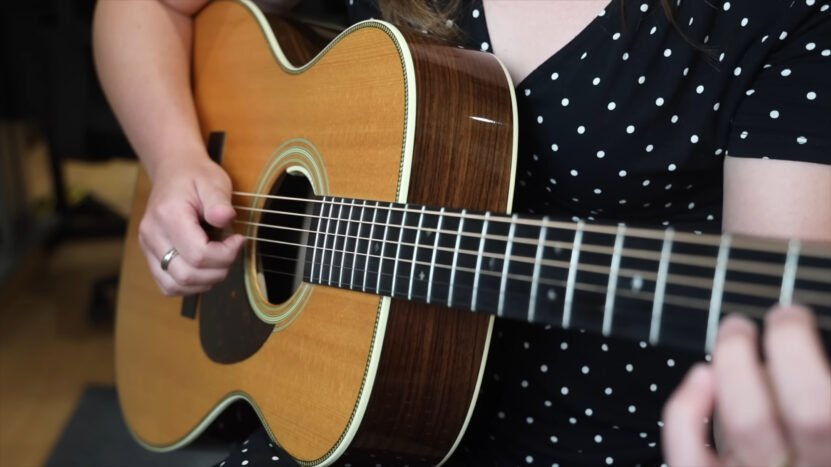
Auditorium guitars, also referred to as OM (Orchestra Model), offer a versatile balance between comfort and sound projection.
They are slightly larger than concert models and deliver a well-rounded tone with more volume and depth, making them popular for a variety of playing styles.
Key Characteristics
- Body Size: Larger than concert guitars, typically around 15-16 inches at the lower bout.
- Tone: Balanced with strong mids and good bass response, making it suitable for both fingerpicking and strumming.
- Playability: A comfortable size for most players, it’s large enough to provide good volume without being too bulky.
Popular Models
- Martin OM-28: A classic model known for its excellent tonal balance and craftsmanship. It’s one of the most sought-after auditorium guitars on the market. Price: Around $3,500.
- Taylor 214ce: One of the best-selling auditorium models, known for its bright sound and versatility. This guitar works well for both beginners and advanced players. Price: Around $1,100.
- Yamaha AC5R ARE: This model offers a blend of modern features and traditional sound, making it a great option for serious players. Price: Around $1,200.
Best Uses
Auditorium guitars are highly versatile, making them a great choice for both fingerstyle and strumming.
They provide enough projection for live performances and recording while maintaining clarity in more intimate settings. Their balanced tone works well in genres like folk, pop, and even light rock.
5. Grand Auditorium Guitars
Grand auditorium guitars are designed to provide the perfect balance between a dreadnought’s power and a concert guitar’s comfort. Introduced by Taylor in the 1990s, this body shape offers versatility, making it a favorite among modern players who need a guitar that can handle various playing styles.
Key Characteristics
- Body Size: Larger than the standard auditorium, typically around 16 inches at the lower bout.
- Tone: A full, rich sound with pronounced bass and treble response. It offers excellent projection while retaining clarity in the mids.
- Playability: Though slightly larger, it remains comfortable for both seated and standing players, making it a good option for stage and studio use.
Popular Models
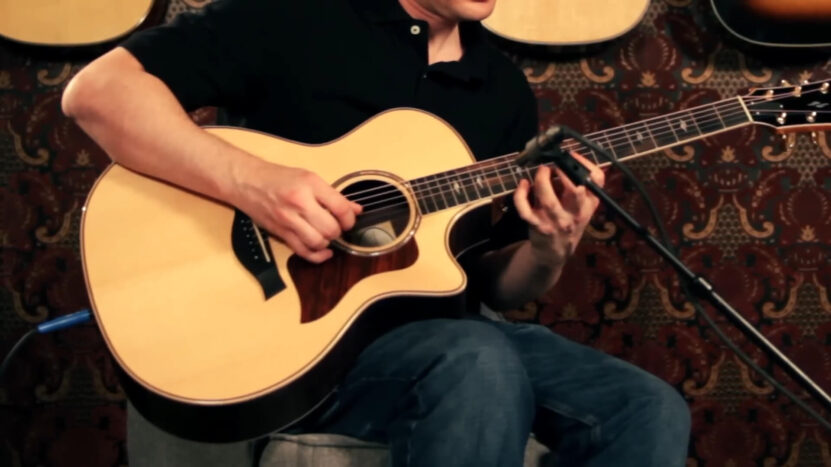
- Taylor 814ce Grand Auditorium: Known for its bright sound and versatility, this model is a staple in Taylor’s lineup. It works well for strumming and fingerpicking alike. Price: Around $3,500.
- Martin GPC-13E: A versatile grand auditorium model with a solid Sitka spruce top and rich tone, suitable for live performances or recording. Price: Around $1,500.
- Yamaha A5R ARE: A professional-grade grand auditorium that delivers clear, articulate sound with excellent projection. Price: Around $1,200.
Best Uses
Grand auditorium guitars excel in versatility, capable of handling everything from light fingerpicking to aggressive strumming.
Their rich tonal range and excellent projection make them suitable for genres like folk, pop, rock, and even some country.
6. Dreadnought Guitars
Dreadnought guitars are the most iconic and widely used acoustic guitar shape, known for their powerful sound and large body. They were originally designed by C.F. Martin & Co. in 1916 to produce a bolder, more resonant tone.
The dreadnought is especially favored by bluegrass and country musicians due to its strong bass and excellent projection.
Key Characteristics
- Body Size: Large, typically around 15-16 inches at the lower bout with a deep body.
- Tone: Known for its booming bass, pronounced mids, and clear treble. It’s the go-to choice for players looking for loud volume and rich, full-bodied tone.
- Playability: The large body can be cumbersome for smaller players, but it provides a strong, powerful sound that excels in live settings.
Popular Models
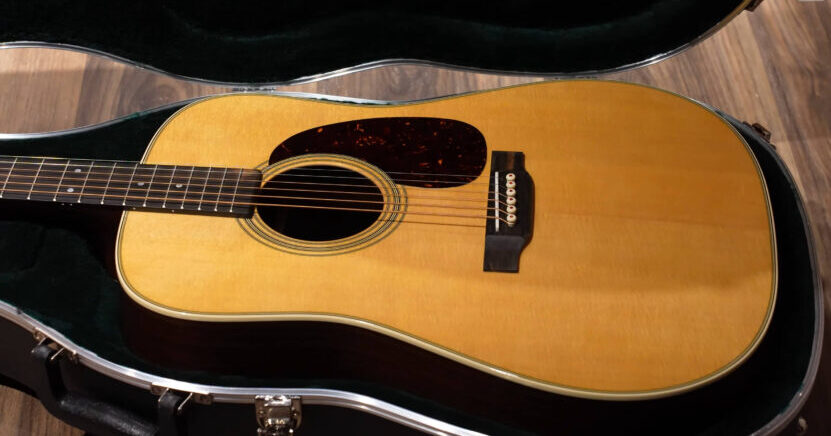
- Martin D-28: This classic dreadnought is known for its balanced tone and powerful projection, making it a favorite among professionals. Price: Around $3,300.
- Taylor 210e: Offers excellent tonal quality at a more affordable price point. It’s versatile enough for various styles, from fingerpicking to heavy strumming. Price: Around $1,000.
- Gibson J-45: A historic model with a warm, rich sound. It’s known for its ability to handle both subtle and aggressive playing. Price: Around $2,800.
Best Uses
Dreadnought guitars are ideal for strumming and flatpicking, making them perfect for bluegrass, country, rock, and folk music. Their powerful projection means they can fill larger venues without the need for amplification, and they can handle heavy playing styles with ease.
7. Jumbo Guitars
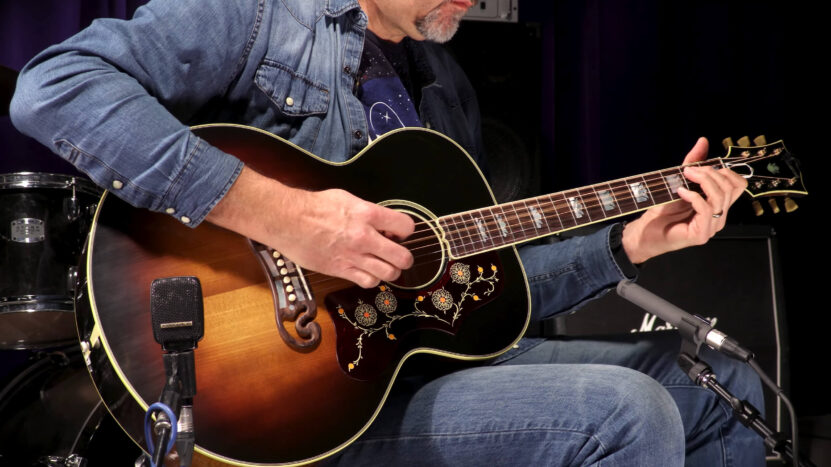
Jumbo guitars are known for their large, rounded bodies and bold, full sound. They were initially introduced by Gibson in the 1930s as a way to produce more volume and projection than smaller models.
Jumbos are perfect for players who want a guitar that can fill a room with sound, often favored by country and rock musicians.
Key Characteristics
- Body Size: The largest of the acoustic guitar shapes, typically around 17 inches at the lower bout.
- Tone: Strong bass response with clear trebles and distinct note separation. They offer a balanced, full sound that is perfect for rhythm playing.
- Playability: Due to their large size, they may not be ideal for smaller players. However, they provide a strong, rich tone that suits louder, more dynamic performances.
Popular Models
- Gibson SJ-200: The most iconic jumbo guitar, known as the “King of the Flat-Tops.” It offers a huge sound with plenty of bass and treble clarity. Price: Around $5,000.
- Guild F-55E: This jumbo model is known for its rich tone and impressive projection, making it perfect for live performances. Price: Around $3,700.
- Epiphone EJ-200SCE: A budget-friendly version of the classic jumbo guitar, offering solid performance for its price. Price: Around $700.
Here you can read more about the Epiphone Inspired by Gibson Hummingbird model, which we wrote about earlier.
Best Uses
Jumbo guitars are perfect for strumming and rhythm playing. Their large soundbox produces excellent bass, making them ideal for country, rock, and blues. They are often used in settings where a strong, booming sound is needed, such as live performances or recording sessions where projection is key.
8. Mini Guitars
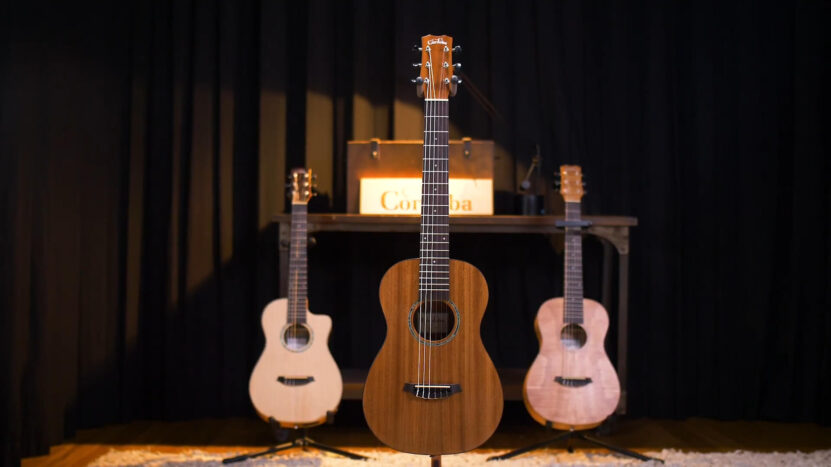
Mini guitars, also known as travel guitars, are the smallest acoustic guitars designed for portability without sacrificing too much on sound.
Despite their compact size, mini guitars can still deliver decent tone, making them ideal for musicians on the go who want a lightweight, easily transportable instrument.
Key Characteristics
- Body Size: Small and compact, typically around ¾ the size of a full-sized guitar.
- Tone: While mini guitars don’t have the same volume or bass as larger models, they still offer a bright, clear tone that works well for casual playing.
- Playability: Lightweight and easy to carry, mini guitars are perfect for players who travel frequently or those with smaller hands.
Popular Models
- Taylor GS Mini: One of the best-known mini guitars, loved for its rich sound despite its small size. Price: Around $700.
- Martin LX1E Little Martin: Known for its bright, clear tone, this model is favored by artists like Ed Sheeran. Price: Around $500.
- Cordoba Mini II: A nylon-string mini guitar that’s great for classical and flamenco styles. Price: Around $300.
Best Uses
Mini guitars are perfect for casual playing, travel, and practice. While they may not have the projection needed for live performances in larger venues, they are great for intimate settings, camping trips, or just strumming around the house.
9. Classical Guitars
Classical guitars are distinguished by their use of nylon strings instead of steel, giving them a softer, warmer tone. They are traditionally used for playing classical music and flamenco, but many musicians also enjoy their smooth, mellow sound for other genres.
The body shape is similar to smaller acoustic models like the concert guitar, but with specific features tailored to classical music.
Key Characteristics
- Body Size: Similar in size to concert guitars, typically around 14 inches at the lower bout.
- Tone: Warm and mellow, with less volume and brightness compared to steel-string guitars. The sound is smooth, ideal for fingerstyle playing.
- Playability: The wider neck and flat fingerboard make it easier for intricate fingerpicking but may be challenging for players used to steel-string guitars.
Popular Models
- Cordoba C12 SP: A high-end classical guitar that offers excellent tonal quality with premium materials. Price: Around $2,000.
- Yamaha C40II: A great entry-level classical guitar, perfect for beginners. It delivers solid performance at an affordable price. Price: Around $150.
- Kremona Sofia S65C: A handmade classical guitar that provides a well-balanced tone and rich sound. Price: Around $700.
Best Uses
Classical guitars are primarily used for classical, flamenco, and fingerstyle music. They’re ideal for solo performances and ensemble playing in smaller, more intimate settings. While they lack the projection needed for large venues, they excel in tone and clarity for more delicate playing.
FAQs
How do I choose the right guitar size?
Choose a guitar size based on your playing style, comfort, and body size. Smaller guitars like parlor or concert are good for fingerpicking and portability, while larger guitars like dreadnoughts or jumbos offer more volume and bass.
What’s the difference between steel and nylon strings?
Steel strings are used on acoustic and electric guitars for brighter, louder sounds, while nylon strings are used on classical guitars for a softer, warmer tone. Nylon is easier on the fingers, making it ideal for beginners.
How often should I change guitar strings?
It depends on how often you play. For regular players, changing strings every 3-4 months is common. If you play less frequently, you can stretch it to every 6 months.
What is guitar action, and why is it important?
Guitar action refers to the distance between the strings and the fretboard. Low action makes the guitar easier to play, while high action can produce a louder sound but may be harder on the fingers.
Should I get a guitar with a built-in tuner?
A built-in tuner is convenient for quick tuning adjustments, especially if you perform live or practice often. It’s not essential, but it’s a handy feature, especially for beginners.
Last Words
Choosing the right acoustic guitar depends on your personal needs, from the type of music you play to your comfort and the tone you desire. Each guitar shape and size offers its own strengths, whether it’s the portability of a parlor, the versatility of a grand concert, or the power of a jumbo.
Related Posts:
- How to Adjust Your Acoustic Guitar’s Truss Rod - A…
- 7 Essential Guitar Chord Shapes Every Beginner Should Know
- What Is Acoustic Guitar Scale Length and Why Does It Matter?
- How to Connect a Guitar Hero Guitar to Xbox One -…
- Discover 10 Techniques for Playing B Major -…
- How Do Guitar Strings Age and When Should You Change Them?



